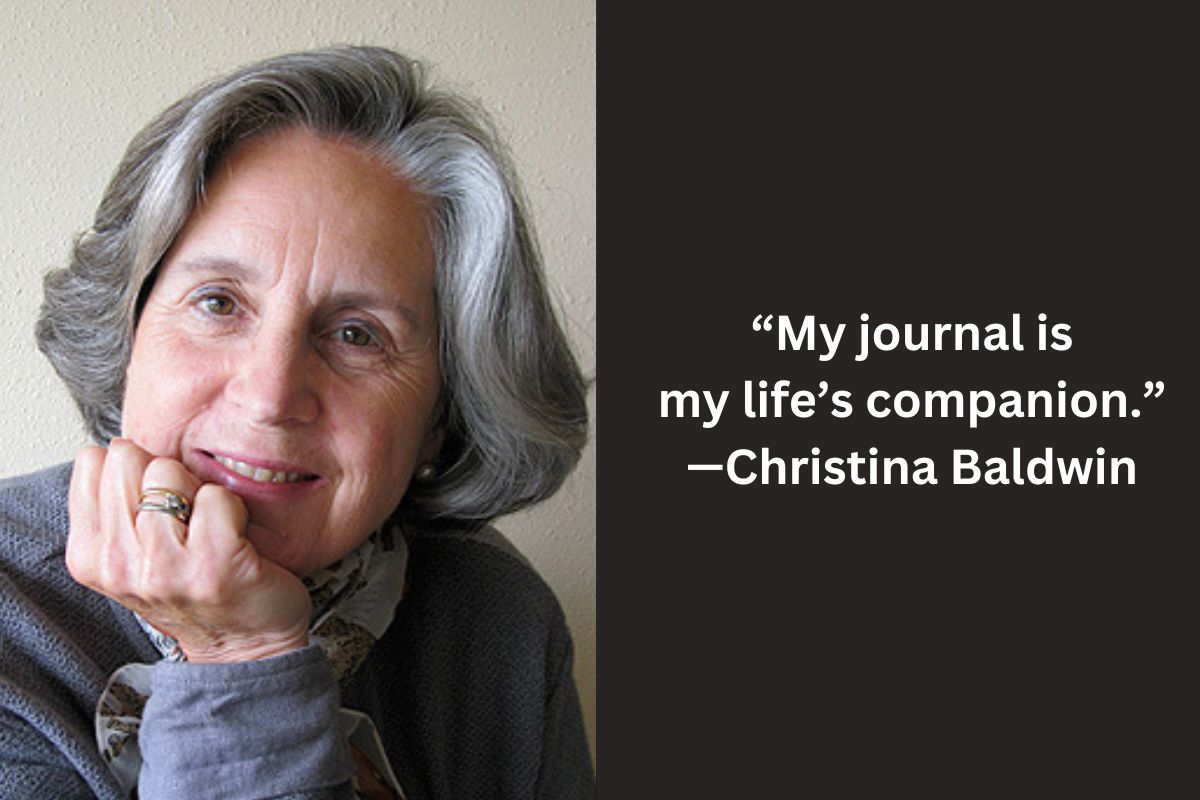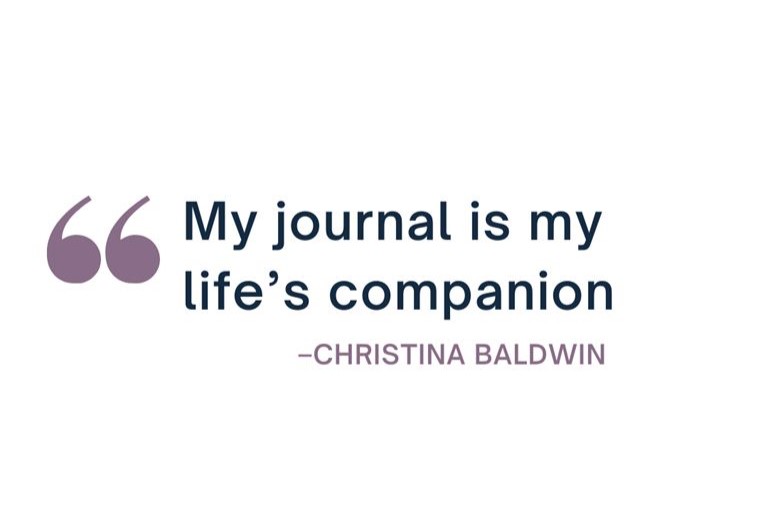 “We call spirituality a journey and speak in metaphors of travel, yet many of us never leave the neighborhood. The journal becomes the metaphor made real, a travelogue of the mind,” writes Christina Baldwin in the opening chapter of her book Life’s Companion: Journal Writing as a Spiritual Practice. “On days when I’m not sure what the journey is or why I’m on it, I can still be sure what the journal is and why I write. I can hold onto my journal, write in it, lament and question and celebrate.”
“We call spirituality a journey and speak in metaphors of travel, yet many of us never leave the neighborhood. The journal becomes the metaphor made real, a travelogue of the mind,” writes Christina Baldwin in the opening chapter of her book Life’s Companion: Journal Writing as a Spiritual Practice. “On days when I’m not sure what the journey is or why I’m on it, I can still be sure what the journal is and why I write. I can hold onto my journal, write in it, lament and question and celebrate.”
Keeping a spiritual journal is a revelatory experience. It allows us to see everything we’ve done, thought, or been in retrospect, showing us what we managed not to see. We look at our pages as we look at our past life, a field lit up by the sun when it breaks through the clouds, and we note with metaphysical astonishment all our deliberate acts, our clearest thoughts, and our most logical intentions. As our awareness grows, we see that what we wrote we didn’t even act out. We were the role that was acted. At most, we were the actor’s motions. Christina Baldwin writes:
Imagine walking down a path, participating in everything around you. You notice actions near and far, you interact with people and deal with obstacles and opportunities along the way. This is the walker: the active self. Imagine a mirror path running parallel to the path you’re walking. The mirror path reflects feelings, thoughts, attitudes, and beliefs about what is happening. This is the watcher: the reflective self. Together these two selves create consciousness: the awareness of ourselves within our own existence. … We hear the mind think. We observe our own behavior.

When we’re on a spiritual journey, we experience our consciousness as an ongoing, intimate dialogue within the self. We become intrigued by the processes of our own minds. As conscious people, we can see the guidance available through this invisible channel of wisdom, directions that come from within. But how to keep track and make sense of it all? Baldwin counsels:
So, now imagine a quiet place from which you contemplate the paths of action and reflection. From this quiet place you can observe both the walker and the watcher. You hear what the mind says. You record what the walker does and how the watcher responds. This is the writer: the self who acts and reflects on paper. … Writing bridges the inner and outer worlds and connects the paths of action and reflection.
As we sit down to write, a piece of paper becomes the canvas on which we paint the inner workings of our minds. It becomes our way of visualizing the elusive stream of consciousness, harness our thoughts, and shape the essence of who we are. Christina Baldwin concludes:
My journal is my life’s companion. The format changes, the pens change, the contents vary, the cast of characters comes and goes. Yet this tangible object reminds me that my life is being lived on many levels; it reminds me that I need to act, watch, reflect, write, and then act more clearly.
Life’s Companion, full of practical exercises, writing prompts, and inspiring examples of spiritual journaling, will change the way you put your thoughts on paper. Writing will become your newfound friend on your spiritual journey. Complement with our article on the magic of handwriting.

I’m a freelance writer with 6 years of experience in SEO blogging and article publishing. I currently run two websites: MindfulSpot.com and OurReadingLife.com. While you’re here, get the latest updates by subscribing to my newsletter.








